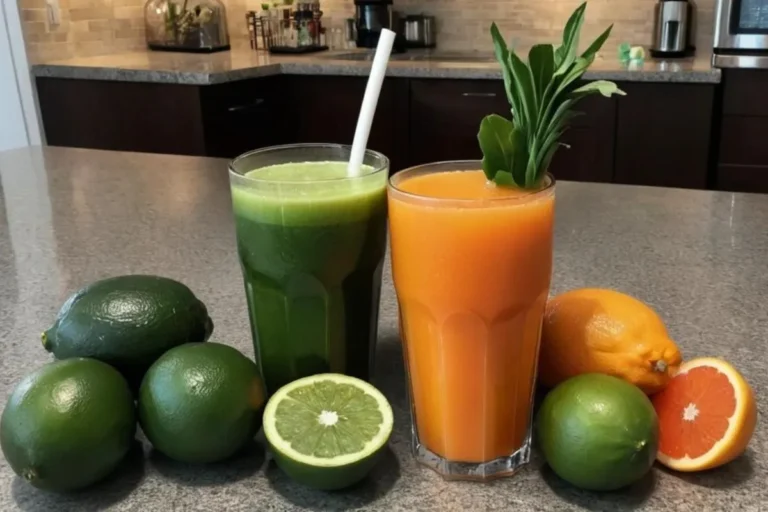Juicing has become a popular trend for people who want to enhance their health, boost energy levels, and get a concentrated dose of essential nutrients. Among the many methods and guidelines for juicing, the 80/20 rule stands out as a straightforward yet effective strategy. But what exactly is the 80/20 rule for juicing, and why should you consider it?
Understanding the 80/20 Rule
The 80/20 rule in juicing is simple: make your juice with 80% vegetables and 20% fruits. This rule helps you get the maximum health benefits by focusing on nutrient-dense, low-sugar vegetables while still enjoying the natural sweetness that fruits bring. The idea is to strike a balance between the powerful nutrients found in vegetables and the palatability provided by fruits. By following this principle, you not only reduce your overall sugar intake but also enhance the detoxifying properties of your juices.
For more details on the best types of vegetables to use in your juicing routine, refer to our juicer recipes.
Benefits of the 80/20 Rule for Juicing
Following the 80/20 rule offers numerous benefits:
- Lower Sugar Intake: By focusing on vegetables, you reduce the natural sugars found in fruits, making the juice healthier and suitable for people looking to manage their sugar levels.
- Rich in Nutrients: Vegetables are packed with vitamins, minerals, and antioxidants that boost immunity and overall health.
- Weight Management: Consuming fewer calories through juice can aid in weight loss and help maintain a healthy weight.
- Improved Digestion: High-fiber vegetables like spinach and kale support digestive health and regular bowel movements.
Incorporating more greens and fewer high-sugar fruits like grapes or pineapples ensures that your juice remains a potent health elixir without the added calories. For more on how diet affects your overall health, see our article on balancing your diet with the 80/20 rule.
How to Apply the 80/20 Rule in Your Juicing Routine
To effectively apply the 80/20 rule:
- Choose the Right Vegetables (80%): Focus on leafy greens (spinach, kale), cucumbers, celery, and other low-sugar vegetables. These provide the most nutrients and least calories.
- Select Low-Sugar Fruits (20%): Use fruits like apples, berries, or lemons to add flavor without raising sugar content too much.
- Mix and Match for Taste and Nutrition: Experiment with combinations like kale, cucumber, and green apple or spinach, celery, and lemon for a balanced flavor.
Consider these tips when selecting ingredients:
- Use herbs like mint or basil for added flavor.
- Incorporate spices such as ginger or turmeric to boost metabolism.
Common Mistakes to Avoid
While the 80/20 rule is easy to follow, beginners often make a few mistakes:
- Using Too Many Fruits: This increases the sugar content and calories, defeating the purpose of a healthy juice.
- Overlooking High-Fiber Vegetables: Vegetables like carrots or beets add more nutrients and help in digestion but should still be used within the 80% vegetable portion.
- Not Experimenting Enough: Don’t be afraid to try new combinations; this keeps your juice interesting and ensures a wide range of nutrients.
Check out our guide on how to keep your juice healthy and balanced for more tips.
The 80/20 Rule and the Pareto Principle
The 80/20 rule for juicing draws inspiration from the Pareto Principle, a concept often applied to productivity, stating that 80% of outcomes result from 20% of efforts. Similarly, in nutrition, 80% of your health benefits come from consuming nutrient-rich foods, and only 20% should be indulgent or higher in sugar content.
Applying this to juicing:
- Maximize Nutrition: Focus on vegetables that deliver the most nutrients per serving.
- Limit Sugars: Keep fruit to a minimum to maintain low sugar content.
For more insights on this principle, read Joe Cross’ take on the Golden Reboot Rule.
Real-Life Success Stories
Many people have seen great benefits from adopting the 80/20 rule in their juicing routine:
- John, a 45-year-old executive, used the rule to lose 20 pounds over three months, improving his energy levels and overall health.
- Sarah, a mother of two, found that her children enjoyed juices made following the 80/20 rule because they were tasty yet nutritious.
The versatility of this rule allows for a wide range of flavors and health benefits, making it suitable for everyone.
FAQs About the 80/20 Rule for Juicing
- What are the best vegetables and fruits for the 80/20 rule? Focus on leafy greens, cucumbers, and celery for vegetables; choose apples, berries, and citrus fruits for low-sugar options.
- Can I juice only fruits and still follow the 80/20 rule? No, the principle requires 80% vegetables to maximize health benefits and minimize sugar intake.
- How often should I juice using the 80/20 rule? Ideally, every time you juice. It’s a sustainable approach for daily or regular juicing.
- Is the 80/20 rule suitable for everyone? Yes, but those with specific health conditions should consult a healthcare provider.
- Can the 80/20 rule help with specific health conditions? Yes, it can aid in weight management, detoxification, and improving digestion.
Conclusion: Start Your Juicing Journey Today
By incorporating the 80/20 rule into your juicing routine, you can enjoy delicious juices while reaping maximum health benefits. This simple yet effective guideline helps you maintain a low sugar intake, enhance your nutrient consumption, and support overall wellness. Start experimenting with different combinations today and see the difference for yourself!
For a variety of juice recipes that adhere to the 80/20 rule, visit our collection of juicer recipes.
